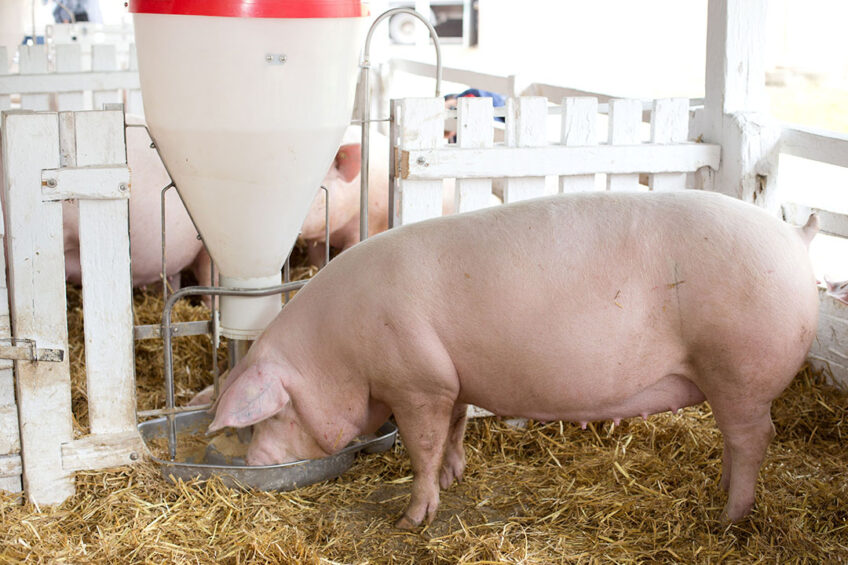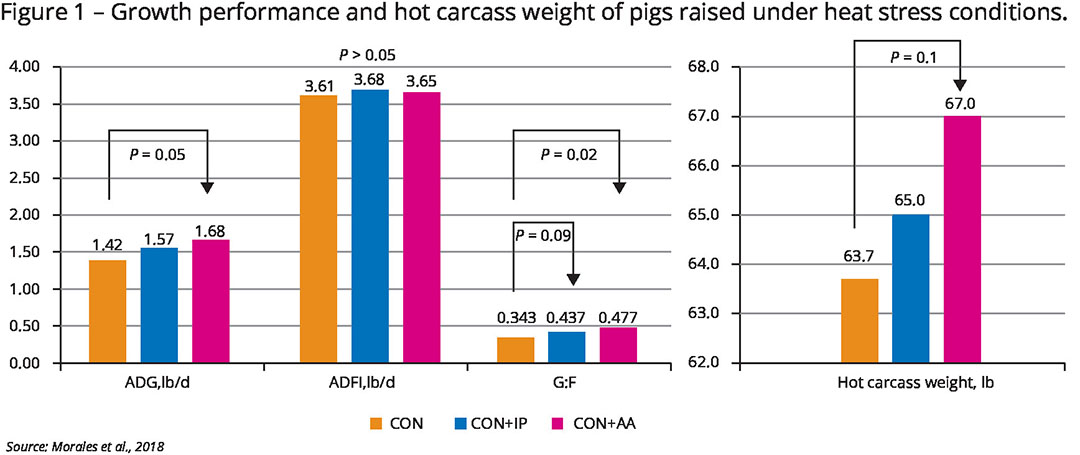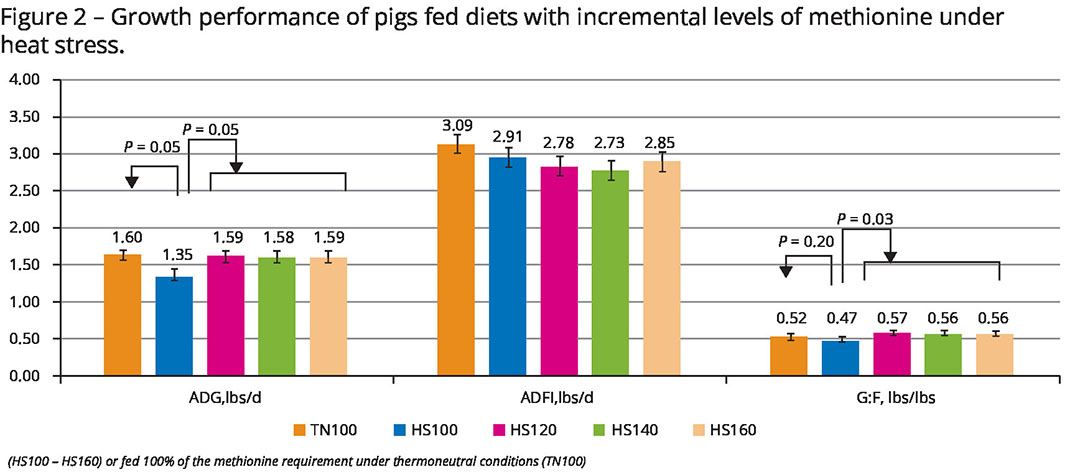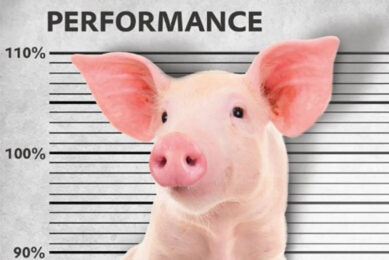Heat stress: 3 cost-saving strategies for swine feed

Heat stress is a seasonal problem that producers can address by making changes to feed. This article suggests 3 dietary strategies that can be implemented individually or in combination to support pig growth and profit generation.
In summer, pig farmers observe a drop in livestock growth performance that leads to economic losses. In 2021, pigs slaughtered from mid-June to September had a 2.3 kg (5 lb) reduction in carcass weight compared to pigs slaughtered from October to mid-June (USDA, 2021). These losses equate to US$ 6.00 per pig.
To adapt to summer heat, pigs’ bodies need to carry out physiological changes that dissipate metabolic heat more efficiently and reduce metabolic heat production.
Heat stress causes a reduction in feed intake and consequently in amino acids and energy intake, and a higher production of reactive oxygen species. Damage to the intestinal mucosa, poorer amino acid absorption and availability and lower average daily gain (ADG) and gain to feed ratio (G:F) are also observed.
Understanding these physiological changes helps in the proposal and testing of nutritional strategies to facilitate pigs’ adaptation to heat. Here are 3 viable dietary strategies to sustain pigs’ growth during heat stress.
 Reduce dietary crude protein
Reduce dietary crude protein
Increased protein intake is associated with higher metabolic heat production. An assessment of growth performance in pigs under heat stress conditions showed that pigs receiving diets with 11.3% crude protein – compared to 13.6% crude protein – had greater feed intake and final body weight due to greater content of net energy per unit of feed and potential contribution to lower metabolic heat production. Cutting the level of protein was shown to improve the performance of heat-stressed pigs and reduce feed costs.
In 2018, a group of researchers led by Dr John Htoo, attached to Evonik, analysed data from 30 studies that evaluated the effect of lowering protein content in pig diets in non-heat stress conditions. Seven reported detrimental effects, which could be explained by deficiency in essential amino acids and low non-essential amino acids content. Reducing dietary protein therefore requires meticulous evaluation of feed ingredients, confidence about the pigs’ essential amino acid requirements under normal or challenging conditions, sufficient non-essential amino acids in the diet and the use of a net energy system to formulate diets.
 Increasing amino acid density in the diet
Increasing amino acid density in the diet
Feed intake reduction in heat-stressed pigs is influenced by age, size and ambient temperature. The drop is greater in heavier pigs and worsens as the ambient temperature rises. In 2011, a team of researchers led by David Renaudeau, attached to the French National Institute for Agriculture, Food and Environment (INRAE), delved into this topic. The team estimated that pigs with 25, 50 and 75 kg of body weight (55, 110 and 165 lb respectively) will reduce their feed intake by 9, 32 and 55 g/day, respectively, when exposed to 26°C and above. To increase amino acid density in the diet, the producer should compare the feed intake of pigs reared during summer vs non-summer, ideally by growing phase (e.g. if it is estimated that the drop in feed intake is 25% during the summer, then an increase in amino acid density of 25% can help to support growth).
In 2018, a team led by researcher Adriana Morales Trejo of the Autonomous University of Baja California in Mexico evaluated growth performance and hot carcass weight of pigs of 33 kg of body weight (73 lb) under heat stress conditions (28 to 38°C, 21 days assay). The team assigned the pigs to one of three dietary treatments to determine if increasing the concentration of essential amino acids by 25% compared to the 2012 National Research Council (NRC) recommendation can improve their performance and whether the source of amino acids, as soybean meal or crystal amino acids, affects performance differently. The treatments were 25% extra essential amino acids fed as intact protein (CON+IP) or crystal amino acids (CON+AA).
Pigs in this experiment showed no differences in feed intake (Figure 1). Those fed diets containing 25% more essential amino acids saw an increase in ADG and G:F. However, providing extra amino acids through crystal amino acids rather than soybean meal increased diet efficiency, reflected in a greater G:F.

 Increasing methionine requirements
Increasing methionine requirements
During heat stress, pigs accumulate reactive oxygen species that disrupt cell integrity and increase cell permeability, leading to organ injury and leaky gut. Antioxidant enzymes in the body – like catalases, superoxide dismutases and glutathione peroxidases – reduce the reactive oxygen species and convert them into molecules that are not harmful to the body.
Glutathione – the most powerful cellular antioxidant – is utilised by glutathione peroxidases to reduce reactive oxygen species. It is produced by the body using glutamine and glycine (typically abundant) and cysteine (conditionally limiting). Methionine is a precursor of cysteine and, at the optimal level, can guarantee the synthesis of glutathione. Thus, during heat stress the demand for methionine could be greater to restore the balance of oxidants and antioxidants in the body.

A recent study in 2021 was conducted by a team led by Adriana Morales Trejo at the Autonomous University of Baja California in Mexico, supported by Evonik. It showed that pigs under heat stress conditions fed at 120% of the methionine level recommended by the NRC (2012) improved growth, lysine and threonine utilisation and antioxidant capacity, as shown in Figure 2.
These findings suggest that methionine is limiting during heat stress, and increasing methionine levels optimises utilisation of lysine and threonine and other amino acids. The team evaluated the economic benefit of feeding pigs methionine at 120% vs. 100% of the NRC recommendation during thermoneutral or heat stress conditions. Increasing methionine to 120% of the recommendation was shown to increase the efficiency of pigs to grow during heat stress and reduced the feed cost per unit of gain.
Conclusions
Reducing crude protein together with properly balanced amino acids in the diet can increase net energy density, improve growth performance and reduce the cost of feed per unit of gain of heat-stressed pigs. Increasing amino acids density using protein-bound soybean meal or crystal amino acids improved the ADG and G:F of heat-stressed pigs, but increasing amino acid density with only crystal amino acids further increased G:F.
Supplementing methionine at 120% of the NRC recommendation to heat-stressed pigs improved pig growth, lysine and threonine utilisation and antioxidant status. It also lowered the cost of feed per unit of gain compared to pigs fed at 100% of the NRC recommendation.
References available on request.



